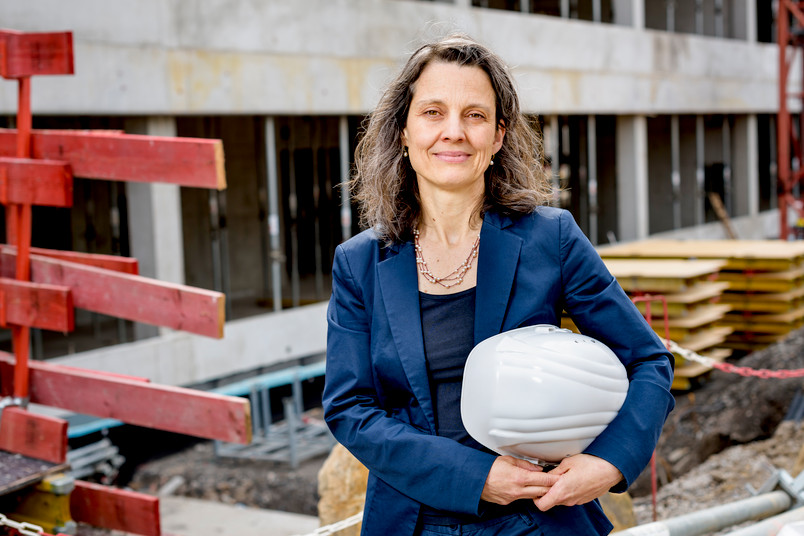03.09.2020

The construction industry is responsible for a significant part of global CO2 emissions. This is mainly due to the raw materials used, such as cement, concrete and steel. In addition, further environmental damages are caused, for example due to the high consumption of sand and gravel, which are often mined in nature areas that are worth protecting.
But not building is not a solution either, because, especially in the big cities, affordable living space is scarce than ever. If we want to achieve the climate targets despite the current general building boom, alternative concepts must be found - concepts such as those that are e.g. at the Chair for Resource-Efficient Building.
The chair was established in 2014 at the Faculty of Civil and Environmental Engineering Sciences with the appointment of Prof. Dr. Ing Annette Hafner. With 7 academic and 5 student employees, it is not one of the largest, but certainly one of the faculty's most future-oriented chairs.
In this interview, Mrs. Hafner explains what exactly is meant by the term resource-efficient building, which aspects are particularly focused on and which steps have to be taken to make building generally more environmentally friendly.
The construction industry is responsible for a significant part of global CO2 emissions. This is mainly due to the raw materials used, such as cement, concrete and steel. In addition, further environmental damages are caused, for example due to the high consumption of sand and gravel, which are often mined in nature areas that are worth protecting.
But not building is not a solution either, because, especially in the big cities, affordable living space is scarce than ever. If we want to achieve the climate targets despite the current general building boom, alternative concepts must be found - concepts such as those that are e.g. at the Chair for Resource-Efficient Building.
The chair was established in 2014 at the Faculty of Civil and Environmental Engineering Sciences with the appointment of Prof. Dr. Ing Annette Hafner. With 7 academic and 5 student employees, it is not one of the largest, but certainly one of the faculty's most future-oriented chairs.
In this interview, Mrs. Hafner explains what exactly is meant by the term resource-efficient building, which aspects are particularly focused on and which steps have to be taken to make building generally more environmentally friendly.